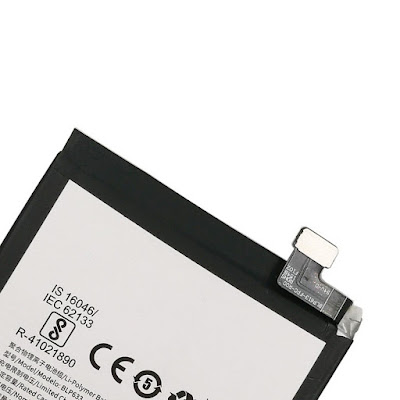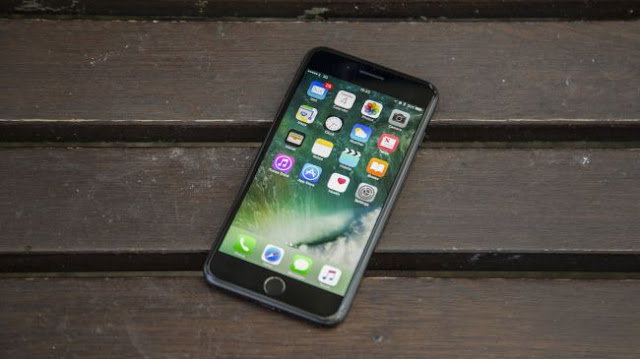The iPhone 11 release
date is likely in September, but Apple is already rumored to be testing out
several iPhone 2019 concepts months in advance, as you’ll see below.
There
are plenty of iPhone 11 leaks to pore over on this page, and all of them point
to a more significant upgrade than last year’s rather incremental iPhone XSdesign.
It
may not be a radical top-to-bottom change considering the iPhone Xredesigned
launched in late 2017, but the rear camera may get a big upgrade if you turn
your attention to the back of every new iPhone 11 concept we’ve seen.
Cut to the
chase
With
three iPhones launched in 2018 – the standard iPhone XS, larger iPhone XS Max and
budget iPhone XR – we
expect Apple to repeat the trifecta this year with the iPhone 11 possibly
launching alongside the iPhone 11 Max and the iPhone 11R (names TBC).
So what new features
will the iPhone 11 have, and will it still have a notch? Let’s investigate what
we expect from Apple’s next flagship iPhone.
New iPhone 11
design
We’re seeing iPhone 11 renders (shown
below) months ahead of Apple’s expected launch event, and all of the attention
so far has been to the back.
The images show
three cameras in a central block on the back, a back which looks to be made of
glass, as we’d expect, while the front retains the notch from the iPhone XS.
We’ve seen this design rumored a second time now, so it could be accurate.
However,
it’s not the only design doing
the rounds, with another showing a triple-lens camera in the left corner. That
would be more in line with where Apple currently places the camera.
These image also show a
likely glass back and the same arrangement of buttons as the iPhone XS, and
multiple leakers have claimed they’re right.
The leaked case dummies that
you can see above show how the triple-lens rear camera might look. Respected
Apple analyst Ming-Chi Kuo has weighed in to say that one of these lenses might
be almost invisible, adding at the same time that
the selfie camera will get a boost from 7MP to 12MP.
One
of the sources of the earlier images added that three new iPhone models are in
the works – successors to the iPhone XS, iPhone XS Max and iPhone XR. It looks
very much like we’ll get three models again this year.
New iPhone 11
display
We’ve heard that the iPhone XI will have a 5.8-inch display, just like the
iPhone XS, but with smaller bezels, and that it won’t support 5G, but that it
will, surprisingly, have a 4,000mAh battery and a USB-C port. The same source
says to expect space grey, gold, silver and blue colors.
However, another source says
it won’t have USB-C, adding that the front camera will be upped to 10MP (from
7MP on current models), and that the rear camera will have 14MP and 10MP
lenses, as well as a third, currently unknown one.
New iPhone 11
camera
Most of the rumors we’ve
heard point towards there being three cameras on the iPhone 11.
We’ve
seen schematics which
seem to be for an upcoming iPhone and match the camera layout mentioned in the
‘Design’ section.
Not
only that, but part of a chassis supposedly
intended for the iPhone 11 has also been caught on camera as you can see below,
and it matches the schematic, showing cut-outs for three cameras in the top
left corner.
However
we’ve also heard from another source that
only the highest-end iPhone 2019 (which we’ll call the iPhone 11 Max for now)
will have three rear cameras, so it’s possible the ‘lite’ and flagship phones
won’t.
The same source says
that the other two handsets will have dual-lens cameras and that the iPhone XR
successor will stick with an LCD screen.
In fact, we’re hearing this from multiplepublications now. The iPhone 11 Max may be the one
version with a triple-lens camera, while the smaller handsets in the iPhone
range may get them “eventually,” reports Bloomberg – so possibly not
the 2019 models.
Interestingly, a laser-powered 3D camera was
supposedly destined for the iPhone 11, but said to have been delayed to the
iPhone 12 (or whatever Apple calls its iPhone 2020 model). This iPhone roadmap
suggests Apple is going all in on augmented reality (AR).
As
well as a better front-facing camera though, the iPhone 11 could also pack the
snapper and related sensors into a smaller notch, as a new tech created
by one of Apple’s camera component suppliers allows for some of the sensors to
be placed under the screen.
There’s no confirmation
that Apple will use this tech, but we’d expect the company will be looking for
ways to shrink the notch.
New iPhone 11
features
We’ve
now heard multiple times that
it won’t get USB-C, so don’t count on a change from Lightning.
One
new feature it might get though is two-way wireless charging,
allowing you to use the iPhone 11 as a charging mat for other devices. It’s
a rumor we’ve heard more than once now so
it definitely seems to be on the cards.
In
order to make the most of that feature the battery could grow, with reliable
Apple analyst Ming-Chi Kuo suggesting that
the iPhone 11 could get a battery that’s roughly 20-25% bigger than the
2,658mAh one in the iPhone XS.
The iPhone 11 Max’s
meanwhile could grow around 10-15% larger than the 3,174mAh one in the iPhone
XS Max and the iPhone XR successor could get one 5% larger than the 2,942mAh
one in the iPhone XR. That would all apparently happen without making the
phones any thicker, as the laminate on the screen would instead be thinner.
The same source for the
first reversible charging tip adds that we might see a frosted glass back, and
ultra-wide band connectivity, which would allow for improved indoor
positioning. That could help with navigating interiors or might benefit AR
applications.
The
new iPhones may even be easy to use in the rain. A new report claims Apple
is experimenting with a new tech that allows you to use the phone’s screen
underwater.
Could we throw the iPhone 11
in? Image credit: TechRadar
What’s more, a patent suggests
the camera on a future iPhone would be able to tell when you’re underwater and
alter settings accordingly, so that underwater photographs look better.
Meanwhile, another iPhone 11 leak
suggests the new handsets could support input from the Apple Pencil that
currently only works with iPads.
Inside the device we’ve heard talk that
the iPhone 11 will include support for the latest Wi-Fi 6 connection standards
– though 5G tech might have to wait until the 2020 iPhones.
New iPhone 11
release date
The iPhone 11 launch
date may be a little later than previous years, as Europe’s biggest tech show,
IFA 2019 in Berlin, is set to run from September 6-11 this year – which may see
Apple defer its new iPhone launch to the following week.
It’s unlikely though, as
the new iPhone launch has crossed over with the show a number of times
(including 2014, 2015 and 2016), which means we’re still most likely to see an
announcement week commencing September 9.
Apple
historically hasn’t held its phone event on a Monday, with Tuesday or Wednesday
the most commonly used days. With the Wednesday being September 11, a day of
mourning in the US, Apple will most likely pick an
iPhone 11 launch date of Tuesday, September 10 2019.
If Apple does opt to
delay the launch by a week, we could be looking at a potential iPhone 11 launch
date of either September 17 or September 18.
Apple
hasn’t launched an iPhone this late since 2011, when it announced the iPhone 4S on
October 4, and we fully expect the Cupertino, California based firm to stick
with a September arrival for the new iPhone in 2019.
As for the iPhone 11
pre-order date, Apple tends to open them on the Friday following the launch,
which would be September 13 by our calculations.
Finally, the new iPhone
11 release date – the day when you’ll actually be able to get your hands on the
handset for the first time – could be just a week after the pre-orders open, so
September 20 if our analysis is correct.
These dates could quite
easily shift though, and we wouldn’t be surprised if Apple followed more recent
tradition and launch the new iPhone 11 on September 10.
New iPhone 11
price
·
iPhone 11 price likely to start
around $999 (£999, AU$1,579)
·
There could be a new price
strategy
Even without the
official iPhone 11 price, we know it’ll cost a lot. After all, Apple priced the
iPhone XS and iPhone X starting at $999 (£999, AU$1,579). We could see
identical prices for the iPhone 11.
With
news that Apple isn’t selling as manyiPhones as it previously forecast, there’s a chance the iPhone
11 price will offer a more affordable look – although we reckon a price freeze,
rather than a reduction, is a more likely move by Apple.
It
could mean good news for the successor to the well-received iPhone XR, with the
main complaint about the first handset being it was still a little steep
price-wise. If Apple can reduce the price on the iPhone 11R, it may help soften
a lofty iPhone 11 price tag.
New iPhone,
iPhone 11 or iPhone XI?
It seems Apple has
backed itself into somewhat of a naming corner with the recent XS, XS Max and
XR monikers – so where does it go from here?
Will it stick to roman
numerals, revert back to traditional digits, or ditch them all together? At
this stage, with sparse new iPhone leaks around, nothing is off the table.
At this moment in time,
we’re seeing most of you searching for ‘new iPhone’, and that’s a strong
contender. Apple has already ditched numbered increments for Mac, Macbooks, TV
and iPads, so new iPhone would be a logical next step.
However, the numbers are
a great way to easily distinguish new devices from old, so both iPhone 11 and
iPhone XI are very much in the running. Apple never did give us an iPhone 9
though – with the iPhone 8 the final digit before the ‘X’ revolution – so going
back to ’11’ may look a little odd.
The iPhone XS and XS Max are great, but there’s
still room for improvement
Here at TechRadar we
like to think of the whole tech community as one great, big family who help
each other out, so we’ve come up with a few upgrades we reckon would go down a
treat on the new iPhone.
The
Apple notch is distinctive thanks to its size, but that’s also its Achilles
heel. It takes up a large amount of space along the top of the screen while we
seen Android makers bring us dew-drop screens which are only as big a single
front facing camera.
What’s
preventing the notch from simply being ditched is all the tech Apple has
crammed into it, and to remove it completely could mean a loss of some features
– such as Face ID.
Apple
can probably relocate the microphone, proximity sensor and speaker, which in
turn may see a reduction in size of the notch – which would be a step in the
right direction.
But,
no notch would be the killer look – with a clean, elegant design that will
surely turn heads.

The notch is big… imagine if it wasn’t there
on the new iPhone
Apple’s used the same
design for the past two generations, and to avoid the new iPhone 11 being
branded another incremental update, a fresh new look would help.
If Apple does ditch the
notch as we’ve so very kindly asked for above, that would be the first step
towards a new design, but we’d like to see it go further,
It’s already removed the
headphone jack and home button, so our focus is now on the alert slider, volume
buttons and power key.
We’ve seen HTC and
Google implement squeezable sides on their phones, and if Apple can hone this
technology to make it even more user friending it could be the end of any
physical button or switch on the handset.
3. Better
battery life
The
iPhone XS provided an improvement in battery over the iPhone X, but as we noted in our review,
it’s still “a long way from the best on the market.”
It’s time Apple really
got to grips with battery life, giving the new iPhone 11 a power pack that will
see it comfortably through one day and into the next without a panic about
finding a charger overnight.
Battery technology isn’t
going to give us the multiple days of battery life we saw from feature phones
back in the early 2000s, but an iPhone that could stretch to two days from a
single charge would really get people talking.
4. eSIM only
Having to slide a SIM
card into a new phone feels rather old fashioned in 2019, so we’d like to see
the physical card ditched in favor of a dual eSIM setup in the new iPhone 11.
We’d also want an easy
to use setting that allows us to easily jump onto a network of our choosing at
a tariff of our choice and, more importantly, be able to easily switch to a
different network when our current deal expires.
Plus, it would also mean
the removal of the SIM tray, allowing for a sleeker design and potentially
freeing up some precious additional space inside the handset for new features
(or more battery!).
This is only partly on
Apple however, as carriers around the world would have to fully support eSIM
technology and at the moment only a handful do so.



















































